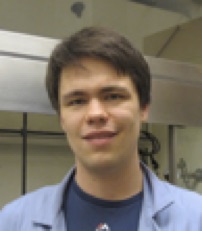Org. Synth. 2020, 97, 245-261
DOI: 10.15227/orgsyn.097.0245
Anhydrous, Homogeneous, Suzuki-Miyaura Cross-Coupling of Boronic Esters using Potassium Trimethylsilanolate
Submitted by Connor P. Delaney
1, Ethan M. Heyboer
1, and Scott E. Denmark
1*
Checked by Yujia Tao and Sarah Reisman
1. Procedure (Note 1)
A.
Neopentyl 3,4-dichlorophenylboronic ester (2) A 500-mL, single-necked, round-bottomed flask (24/40 joint) containing a 4-cm x 1-cm, rod-shaped, Teflon-coated, magnetic stir bar is charged with
3,4-dichlorophenylboronic acid (8.00 g, 41.9 mmol, 1 equiv), followed by
neopentyl glycol (4.80 g, 46.1 mmol, 1.10 equiv) (
Note 2). A graduated cylinder is used to measure
toluene (200 mL), which is then poured into the round-bottomed flask to give a cloudy, white suspension (
Note 3). The flask is then fitted with a 24/40 Dean-Stark trap, and the trap is filled with 22 mL of
toluene. The Dean-Stark trap is fitted with a 24/40 reflux condenser - the top of the reflux condenser is left open to air. With water running through the condenser, the flask is lowered into a silicone oil bath pre-heated to 140 ºC (Figure 1). The stirring solution is heated at reflux for 1.5 h, at which point no further water is observed to be condensing in the Dean-Stark trap (
Note 4) (Figure 2). The flask is removed from the oil bath, and is allowed to cool in the air until the internal temperature is 23 ºC, as measured by a thermocouple. The clear, pale yellow solution is poured into a 500-mL, separatory funnel (29/42 joint), and the organic layer is washed with deionized water (4 x 60 mL) (
Note 5).
|
Figure 1. Step A reaction
in progress
|
Figure 2. Step A reaction
complete
|
(photos provided by submitters)
The organic layer is transferred to a 250-mL Erlenmeyer flask, and 30 g of anhydrous
magnesium sulfate is added (
Note 6). After stirring for 15 s, the flask is allowed to sit for 5 min, giving a clear, colorless solution. The
magnesium sulfate is removed by gravity filtration using a 60-mL, medium-porosity, sintered-glass fritted funnel, into a tared, 250-mL, round-bottomed flask (14/20 joint). The
toluene is removed by rotary evaporation (30 ºC, 112-37 mmHg) to give a flakey white solid. The product is dried under high vacuum (23 ºC, 0.3 mmHg) for 20 h to yield
neopentyl 3,4-dichlorophenylboronic ester (10.30 g, 104% yield, 95% purity) as a bench-stable, white solid (Notes
7,
8,
9, and
10).
B.
3',4'-Dichloro-5-fluoro-[1,1'-biphenyl]-2-amine (4) An oven-dried, 250-mL, three-necked, round-bottomed flask (14/20 joints) containing a 2.0-cm x 1.0-cm football-shaped, Teflon-coated, magnetic stir bar is equipped with an oven-dried, pressure-equalizing addition funnel, an oven-dried gas adapter, and a rubber septum. The 14/20 ground glass joint atop the addition funnel is equipped with a rubber septum, and the apparatus is evacuated and allowed to cool under vacuum (1.0 mmHg) (
Note 11) (Figure 3). Once the apparatus is cool, it is backfilled with nitrogen, and the rubber septum is removed. Using a HDPE powder funnel,
neopentyl 3,4-dichlorophenyl-boronic ester 2 (6.21 g, 24.0 mmol, 1.20 equiv) and
Pd-P(t-Bu3)-G3 (229 mg, 0.40 mmol, 0.02 equiv) are charged into the reaction vessel (
Note 12). The flask is sealed with a rubber septum, and evacuated (<1.0 mm Hg) and backfilled with nitrogen three times.
Figure 3. Reaction cooling under vacuum
(photo provided by submitters)
In a glovebox (
Note 13), a 50-mL, pear-shaped flask (14/20 joint) is charged with
TMSOK (3.59 g, 28.0 mmol, 1.40 equiv) and sealed with a rubber septum (
Note 14). The pear-shaped flask is removed from the glovebox and set aside. Using a 50-mL plastic syringe equipped with a metal needle,
THF (10 mL) is added to the three-necked flask. (
Note 15). Next,
2-bromo-4-fluoroaniline (2.28 mL, 20.0 mmol, 1 equiv) is added to the three-necked flask using a 3 mL plastic syringe (
Note 16) (Figure 4).
Figure 4. Step B reaction set-up
(photo provided by submitters)
A 50-mL plastic syringe with metal needle is used to add
THF (30 mL) to the 50-mL pear-shaped flask that contains
TMSOK. The
TMSOK is dissolved using minimal sonication to afford a clear, colorless solution (
Note 17). Once prepared, the
TMSOK solution is transferred into the addition funnel using a plastic, 50-mL syringe equipped with a metal needle. A thermocouple probe is inserted into the reaction vessel through the septum to monitor internal temperature, and the
TMSOK solution is added dropwise over 30 min at 22 ºC (
Note 18) (Figure 5). Upon initial addition of the
TMSOK solution, a red-orange color evolves and solids (KBr) begin to precipitate from solution. Solids continue to precipitate over the course of the reaction, and the suspension becomes brown over time (Figure 6).
|
Figure 5. Addition of TMSOK |
Figure 6. Completion of Addition
|
(photos provided by submitters)
After 1.5 h (Note 19), the reaction mixture is transferred to a 500-mL separatory funnel (29/42 joint) using hexane (3 x 33 mL) to transfer all material out of the flask (Note 20). The organic phase is extracted with 1 M aqueous ethanolamine (3 x 50 mL), and then with brine (2 x 50 mL) (Note 21). The organic phase is then transferred into a 250-mL Erlenmeyer flask, and dried by adding magnesium sulfate (30g) and swirling by hand for 30 s. After 5 min, the magnesium sulfate is removed by vacuum filtration using a 55-mm Büchner funnel, 250-mL sidearm flask, and 55-mm Whatman #50 filter paper. The resulting solution is concentrated by rotary evaporation (30 ºC, 400 → 40 mmHg), to give 6.84 g of a black oil. This oil is transferred into a 250-mL, Erlenmeyer flask containing a 4.0-cm x 1.0-cm rod-shaped, Teflon-coated, magnetic stir bar using a pipette, with acetonitrile (2 x 25 mL) used to wash residual material over (Note 22).
A 125-mL, Erlenmeyer flask is charged with
p-toluenesulfonic acid monohydrate (3.80 g, 20.0 mmol, 1.00 equiv), which is dissolved in
acetonitrile (50 mL) with brief sonication (
Note 23). Using a glass pipette, the
acetonitrile solution of
p-toluenesulfonic acid is added to the stirring solution of crude product at 23 ºC dropwise over 20 min. A white solid precipitates, and the suspension is further aged with stirring at 23 ºC for 30 min (Figure 7). The solids are collected by vacuum filtration using a 250-mL sidearm flask, a 55-mm Büchner funnel, and 55-mm, #50 Whatman filter paper. After washing with
MeCN (30 mL), the solids are dried on the filter paper by pulling air through the filter cake for 10 min (Figure 8). The still wet solids are transferred using a metal spatula into a 125-mL, Erlenmeyer flask containing a 4.0-cm x 1.0-cm rod-shaped, Teflon-coated, magnetic stir bar.
|
Figure 7. Precipitation
|
8. Filter cake
|
(photos provided by submitters)
Toluene (50 mL) is added, and while stirring, the suspension is heated to reflux through direct contact with the hot plate over the course of 20 min (
Note 24). Once the
toluene began to reflux, the Erlenmeyer flask is removed from heat, and allowed to cool for a period of 3 h (Figure 9). At this point, the solids are collected by vacuum filtration using a 250-mL sidearm flask, a 55-mm Büchner funnel, and 55-mm, #50 Whatman filter paper. The solids are washed with
toluene (100 mL), and dried by pulling air through the filter cake for 30 min. The solids are then transferred using a metal spatula into a tared, 100-mL, round-bottomed flask (24/40 joint), which is heated using a metal bead bath under high vacuum (60 ºC, 0.4 mmHg) for 3 h. The final product is obtained (7.03 g, 82%) as a bench-stable white solid (Notes
25,
26, and
27) (Figure 10).
|
Figure 9. Trituration
|
10. Final Product (4)
|
(photos provided by submitters)
2. Notes
1. Prior to performing each reaction, a thorough hazard analysis and risk assessment should be carried out with regard to each chemical substance and experimental operation on the scale planned and in the context of the laboratory where the procedures will be carried out. Guidelines for carrying out risk assessments and for analyzing the hazards associated with chemicals can be found in references such as Chapter 4 of "Prudent Practices in the Laboratory" (The National Academies Press, Washington, D.C., 2011; the full text can be accessed free of charge at
https://www.nap.edu/catalog/12654/prudent-practices-in-the-laboratory-handling-and-management-of-chemical. See also "Identifying and Evaluating Hazards in Research Laboratories" (American Chemical Society, 2015) which is available via the associated website "Hazard Assessment in Research Laboratories" at
https://www.acs.org/content/acs/en/about/governance/committees/chemicalsafety/hazard-assessment.html. In the case of this procedure, the risk assessment should include (but not necessarily be limited to) an evaluation of the potential hazards associated with
3,4-dichlorophenylboronic acid,
neopentyl glycol,
toluene, anhydrous
magnesium sulfate,
Pd-P(t-Bu3)-G3,
TMSOK,
2-bromo-4-fluoroaniline,
THF,
ethanolamine,
hexane, brine,
tosic acid monohydrate, and
acetonitrile. The Suzuki-Miyaura reaction is significantly exothermic, and appropriate care should be taken.
2.
3,4-Dichlorophenylboronic acid (Oakwood, 98%) was used as received.
Neopentyl glycol (Alfa-Aesar, 99%) was used as received.
3.
Benzene (Fischer, ACS Reagent grade) was used as received.
4. The reaction time will vary based on the design/size of Dean-Stark trap used, airflow in the hood, etc. The reaction is best monitored by observing the cessation of water traveling through the Dean-Stark trap.
5. Excessive washing can cause lower isolated yields of isolated boronic ester, because the ester slowly hydrolyzes in the presence of water.
6.
Magnesium sulfate (Fischer, Certified Powder) was used as received.
7. The yield of this process can be >100%, owing to contamination of the commercial boronic acid with the corresponding boroxine dehydration product. The use of a slight excess of
neopentyl glycol ensures full conversion even if such contamination is present.
8. Characterization data for product
2:
1H NMR
pdf (500 MHz, CDCl
3) δ: 1.02 (s, 6H), 3.76 (s, 4H), 7.41 (d,
J = 8.0 Hz, 1H), 7.59 (dd,
J = 8.0, 1.4 Hz, 1H), 7.85 (d,
J = 1.5 Hz, 1H);
13C NMR
pdf (100 MHz, CDCl
3) δ: 22.0 (s), 32.0 (s), 72.5 (s), 130.0 (s), 132.2 (s), 133.1 (s), 134.9 (s), 135.9 (s);
11B NMR
pdf (161 MHz, CDCl
3) δ: 26.32; IR (NaCl, thin film): 2972, 2957, 2873, 1588, 1494, 1484, 1441, 1423, 1338, 1322 cm
-1. HRMS [M + H] calcd for C
11H
14BCl
2O
2: 259.0464. Found: 259.0459.; mp = 99 ºC.
9. Purity was determined to be 95 wt% by qNMR
pdf using 10.4 mg of
2 and 4.1 mg of pyrazine (Sigma-Aldrich, >99%) as the internal standard. The submitters established analytical purity by Elemental Analysis; Anal. calcd for C
11H
13BCl
2O
2: C, 51.02; H, 5.06; found: C, 51.34, H, 5.03.
10. Checkers obtained 5.71 g (105% yield, 93% purity) when the reaction was performed on half scale.
11. All evacuation and backfilling of the apparatus was accomplished using a vacuum-gas manifold (Schlenk line).
12. The checkers used Strem Chemical's
Pd-P(t-Bu3)-G3 as purchased from Strem Chemical.
Pd-P(t-Bu3)-G3 can also be prepared using the method published by Buchwald and coworkers.
213. A glovebox is only used as a conveniently dry storage space for
TMSOK.
TMSOK can be stored for months in a desiccator and can be weighed and handled in air. It is hygroscopic, but less so than common bases such as NaOH.
14.
TMSOK (95%) was purchased from Gelest and used as received.
15.
THF (Fisher, HPLC grade) was dried by percolation through two columns packed with neutral alumina under a positive pressure of argon.
16.
2-Bromo-4-fluoroaniline (Oakwood, 98%) was purified by Kugelrohr distillation (85 °C, 0.60 mmHg) before use.
17. It was determined that residual solids (KOH) are not detrimental to the reaction if present.
18. The reaction is observed to be exothermic - while adding the solution of
TMSOK in
THF, the reaction was observed to reach a stable temperature around 40 °C for the duration of the addition with a peak temperature of 45 °C. No cooling bath was used to lower the reaction temperature.
19. The reaction was determined to take 1-1.5 h through prior experiments, and monitored by no-D
19F NMR spectroscopy, which showed 97% conversion to the desired product with 3% of another species present.
20.
Hexane (Fischer, ACS grade) was used as received.
21.
Ethanolamine (Acros, 99%) was used as received.
22.
Acetonitrile (J. T. Baker, HPLC grade) was used as received.
23.
p-Toluenesulfonic acid monohydrate (Aldrich, 99+%) was used as received.
24.
Toluene (Fischer, Certified ACS) was used as received.
25. Characterization Data for Product
4:
1H NMR
pdf (400 MHz, CD
3OD) δ: 2.37 (s, 3H), 4.90 (br s, 3H), 7.22 (d,
J = 7.9 Hz, 2H), 7.29 (dd,
J = 8.9, 2.9 Hz, 1H), 7.34 (ddd,
J = 8.8, 7.8, 2.9 Hz, 1H), 7.38 (dd,
J = 8.3, 2.2 Hz, 1H), 7.55 (dd,
J = 8.8, 4.9 Hz, 1H), 7.70-7.66 (m, 4H);
13C NMR
pdf (100 MHz, CD
3OD) δ: 21.3, 117.8 (d,
J = 23.3 Hz), 119.6 (d,
J = 24.1 Hz), 125.5 (d,
J = 3.2 Hz), 126.9, 127.4 (d,
J = 9.2 Hz), 129.8, 130.0, 132.1, 132.5, 134.2, 134.6, 136.9 (d,
J = 1.1 Hz), 138.2 (d,
J = 8.7 Hz), 141.7, 143.4, 163.6 (d,
J = 249.3 Hz).
19F NMR
pdf (381 MHz, CD
3OD) δ: -113.39; IR (NaCl, thin film): 2871, 2587, 1600, 1499, 1469, 1272, 1179, 1125, 1035, 1008 cm
-1; HRMS (M+):
m/z calcd for C
12H
9NCl
2F [cation]
+ 256.0096, found 256.0092; mp = 235 °C (decomposes).
26. Purity was determined to be 98 wt% by qNMR
pdf using 11.6 mg of
4 and 3.5 mg of pyrazine (Sigma-Aldrich, >99%) as the internal standard. The submitters established analytical purity by Elemental Analysis; Anal. calcd for C
19H
16Cl
2FNO
3S: C, 53.28; H, 3.77; N, 3.27; found: C, 53.59, H, 3.72, N, 3.30.
27. The checkers obtained 3.44 g (80% yield, 99% purity) on half scale.
Working with Hazardous Chemicals
The procedures in
Organic Syntheses are intended for use only by persons with proper training in experimental organic chemistry. All hazardous materials should be handled using the standard procedures for work with chemicals described in references such as "Prudent Practices in the Laboratory" (The National Academies Press, Washington, D.C., 2011; the full text can be accessed free of charge at
http://www.nap.edu/catalog.php?record_id=12654). All chemical waste should be disposed of in accordance with local regulations. For general guidelines for the management of chemical waste, see Chapter 8 of Prudent Practices.
In some articles in Organic Syntheses, chemical-specific hazards are highlighted in red "Caution Notes" within a procedure. It is important to recognize that the absence of a caution note does not imply that no significant hazards are associated with the chemicals involved in that procedure. Prior to performing a reaction, a thorough risk assessment should be carried out that includes a review of the potential hazards associated with each chemical and experimental operation on the scale that is planned for the procedure. Guidelines for carrying out a risk assessment and for analyzing the hazards associated with chemicals can be found in Chapter 4 of Prudent Practices.
The procedures described in Organic Syntheses are provided as published and are conducted at one's own risk. Organic Syntheses, Inc., its Editors, and its Board of Directors do not warrant or guarantee the safety of individuals using these procedures and hereby disclaim any liability for any injuries or damages claimed to have resulted from or related in any way to the procedures herein.
3. Discussion
Over the last 40 years, numerous advances have made the Suzuki-Miyaura reaction a staple for the formation of C-C bonds.
3 As of 2014, it is the 2
nd most frequently used reaction of any type in process chemistry, and the 5
th most frequently used in medicinal chemistry.
4 Given its prevalence, one might assume that no further research on the Suzuki-Miyaura reaction is required - on the contrary, we postulate that there is still room for improvement. For example, the number of anhydrous, homogeneous, Suzuki-Miyaura reactions run in aprotic solvents is still limited. The use of anhydrous conditions is advantageous because protodeboronation is attenuated in the absence of protic solvent.
5 However, most existing anhydrous methods utilize bases that are insoluble under reaction conditions. The resulting heterogeneous reaction can be difficult to scale up, as factors such as stir-rate, particle size, and reaction flask shape/size significantly influence the reaction outcome.
This deficiency became apparent during the course of our studies on the Suzuki-Miyaura reaction. Prior investigations from these laboratories on transmetalation demonstrated that boronic ester structure can significantly influence the rate of transmetalation.
6, 7 For example, the ethylene glycol ester of 4-fluorophenylboronic acid transmetalates >20 times faster than the parent boronic acid (Table 1). Significantly, we spectroscopically characterized Pd-O-B linked intermediates
8 incorporating boronic esters prior to transmetalation, and observed their conversion into a biaryl product.
Table 1. Cross-coupling rates of various boronic esters. Rates presented as s-1 x 10-3. The boronic esters shown in the 3rd row did not form Pd-O-B complexes and exhibit non-first order kinetics
This insight ties the rate increase to the elementary step of transmetalation and proves differential reactivity between boronic esters does not necessarily result from different hydrolysis rates.
A cross-coupling method that could harness the differential reactivity of boronic esters would provide researchers an additional point of optimization in the Suzuki-Miyaura reaction. Such a method would ideally be anhydrous, to preclude ester hydrolysis and protodeboronation. As described, these criteria limit the choice of base if one desires to maintain homogeneous reaction conditions. The cross-coupling method described herein employs
potassium trimethylsilanolate as an organic-phase soluble, oxyanionic base capable of promoting the Suzuki-Miyaura cross-coupling of boronic esters under homogeneous, anhydrous conditions.
7A survey found that other organic-phase soluble bases such as potassium
tert-butoxide and sodium
tert-amylate were ineffective at promoting the desired reaction. In contrast,
potassium trimethylsilanolate furnished the desired product in quantitative yield after 5 minutes of reaction time. Further studies revealed a striking dependence of reaction yield on
TMSOK stoichiometry. When
TMSOK is present in large excess (>2.0 equiv), the reaction stalls. This observation is particularly relevant for the cross-coupling hindered or electronically deactivated partners. To avoid this issue, a portion wise addition protocol was developed that allows cross-coupling of a broad variety of partners (Table 2).
Table 2. Development of conditions for portion-wise addition of base. Reaction monitored by 19F NMR against an internal standard
The general applicability of the homogeneous, anhydrous conditions was demonstrated through the synthesis of >40 cross-coupling products. Aryl-aryl, aryl-benzyl, aryl-alkenyl, alkenyl-aryl, and methyl-aryl linkages were successfully formed using these conditions. A selection of those products is shown below (Figure 11). Moreover, we sought to demonstrate the rate increase associated with these boronic ester/TMSOK conditions through direct comparison to literature methods. Toward this end, three Suzuki-Miyaura reactions were identified from the literature that took >50 hours to reach satisfactory conversion. By exchanging the boronic acid for the cis-2,3-tetrahydrofurandiol or neopentyl glycol ester, and by using TMSOK as the base in ethereal solvents, the reaction time could be decreased 10-fold. Furthermore, the isolated product yield was significantly improved in two of the three case studies. It is important to note that in each comparison, the pre-catalyst, catalyst loading, and ligand were unchanged from the original reports. The improvements in rate and yield are attributed entirely to the use of boronic esters in concert with TMSOK.
To demonstrate the scalability and reproducibility of this method, the synthesis of an intermediate
en route to bixafen was chosen. This molecule was selected both for its industrial relevance and the challenging 2-aniline motif.
9 Although the synthesis of this product proved facile using the conditions previously described, the isolation of analytically pure material proved challenging. Isolation of the free aniline predictably leads to degradation over time in air. Therefore, it was determined that isolation as a salt would be beneficial. It was envisioned that the pure salt could be precipitated from the crude reaction mixture as a means of facile purification and storage. A variety of salts were tested, with most proving to be surprisingly soluble in organic media. The tosylate salt was ultimately found to exhibit the desired solubility properties. The next obstacle was the identification of an appropriate solvent for the salt formation -
acetonitrile was ultimately identified as it can solubilize both the crude aniline and tosylic acid monohydrate. When combined with a final trituration in refluxing
toluene to complete the impurity purge, this purification protocol represents a simple and robust method for the isolation of analytically pure
4.
Figure 11. Abridged substrate scope and demonstration of improvement in reaction rate. Yields represent isolated yields
In summary, the use of TMSOK as a soluble base allows for a homogeneous, anhydrous Suzuki-Miyaura cross coupling that improves reproducibility and enables the cross-coupling of fast-acting boronic esters. Herein, the scalability and reproducibility of this method is demonstrated. Further applications of this method toward challenging problems in cross-coupling, alongside detailed mechanistic studies, are underway.
Appendix
Chemical Abstracts Nomenclature (Registry Number)
3,4-Dichlorophenylboronic acid: 3,4-dichlorophenylboronic acid: (151169-75-4)
Neopentyl glycol: 1,3-Propanediol, 2,2-dimethyl-: (126-30-7)
benzene: benzene: (71-43-2)
Magnesium sulfate; sulfuric acid magnesium salt (1:1): (7487-88-9)
Pd-P(t-Bu)3-G3; Methanesulfonato(tri-t-butylphosphino)(2'-amino-1,1'-biphenyl-2-yl)palladium(II): (1445086-17-8)
TMSOK; potassium trimethylsilanolate: (10519-96-7)
THF; furan, tetrahydro-: (109-99-9)
2-Bromo-4-fluoroaniline; 2-bromo-4-fluoroaniline (1003-98-1)
Hexane; n-hexane: (110-54-3)
Ethanolamine; ethanol, 2-amino-: (141-43-5)
MeCN; acetonitrile: (75-05-8)
TsOH · H2O; toluene sulfonic acid monohydrate: (6192-52-5)
Toluene; Benzene, methyl-: (108-88-3)

|
Scott E. Denmark was born in Lynbrook, New York on 17 June 1953. He obtained an S.B. degree from MIT in 1975 and his D.Sc.Tech. (with Albert Eschenmoser) from the ETH Zürich in 1980. That same year he began his career at the University of Illinois. He was promoted to associate professor in 1986, to full professor in 1987 and since 1991 he has been the Reynold C. Fuson Professor of Chemistry. His research interests include the invention of new synthetic reactions, exploratory organoelement chemistry and the origin of stereocontrol in fundamental carbon-carbon bond forming processes. |

|
Connor Delaney was born in New Brunswick, New Jersey on 27 December 1991. He obtained a B.S. degree from Northeastern University, where he studied the reaction kinetics of ruthenium complexes under the direction of Rein Kirss. He is currently pursuing his Ph.D. in the laboratory of Scott E. Denmark at University of Illinois at Urbana-Champaign, where he studies the fundamental processes behind transmetalation in the Suzuki-Miyaura reaction. |

|
Ethan Heyboer was born in Holland, Michigan, in 1998. He is currently pursuing a Bachelor of Science in chemistry at Hope College, where he studies the nickel-catalyzed cross-coupling of phthalimides and boronic acids under Prof. Jeffrey B. Johnson. In 2019, he studied a novel anhydrous Suzuki-Miyaura cross-coupling method as a Snyder Scholar working for Prof. Scott E. Denmark at the University of Illinois at Urbana-Champaign. |

|
Yujia Tao was born in Hangzhou, China. She attended UC Berkeley; double majoring in chemistry and geology. She worked in the lab of Prof. Tom Maimone on developing an oxygen stitching strategy to access small terpenoids and collaborating on the synthesis of thapsigargin. She is currently pursuing her Ph.D. in the laboratory of Sarah E. Reisman at California Institute of Technology, where she studies the total synthesis of complex natural products. |
Copyright © 1921-, Organic Syntheses, Inc. All Rights Reserved